What is Buddhism? - Master Thich Hanh Dinh
- Saturday - 22/01/2022 12:32
- Close page
The reason for Buddha to appear in this world is to teach human beings about the wisdom of Buddha. Buddha once said: "Worship me but do not understand Buddhism is smearing my teaching ."
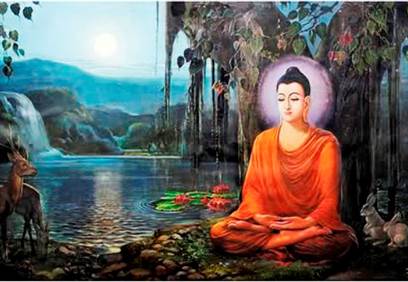
PHAT LINH TEMPLE
WHAT IS BUDDHISM?
WHAT IS BUDDHISM?
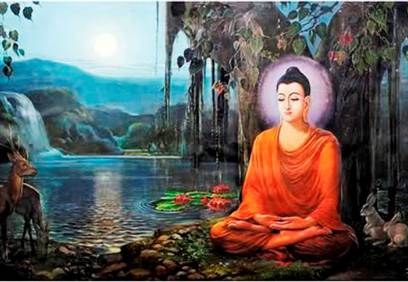

Buddhist calendar: 2565 - 2021
Contents
I. Introduction
- A brief history of Buddha
- Ten main disciples
- 33 Zen patriarchs.
- Tripitaka.
- Sutras Assembly Committee
III. Conclusion
I. INTRODUCTION:
The reason for Buddha to appear in this world is to teach human beings about the wisdom of Buddha. Buddha once said: "Worship me but do not understand Buddhism is smearing my teaching ." Why? We already knew that there are many people who claim to be Buddhist beliefs or Buddhist followers, but if they had no study of Buddhist teachings. So, they understood and presented the concept of Buddhism through experience about personal life, through personal reflection, or through any form of Buddhism, etc. Therefore, they identified and talked about the improper spirit of Buddhism and sometimes slandered Buddhism. They absolutely do not understand Buddhism according to His teachings. For example, they say that Buddhist cultivation is to have acestic practice. Buddha didn’t teach human beings to practice suffering. Suffering practice is not the right Buddhist practice and the way that causes suffering is a foolish method. He taught human beings to practice to end all the suffering. Since human beings end all sufferings, they will get peace and happiness. For the reasons mentioned above, we summarize a few words to introduce Buddhism to let people understand the basic profile of Buddhism.
This short article can be imperfect and flawed. We are looking forward to all the most Venerables to comment and to teach us more.
We would like to dedicate this merit to all living beings in the ten directions of the universe. We all will be born in the Pure Land and become Buddha.
At Ravensburg, Germany on 10/29/2015
Thich Hanh Dinh monks
Thich Hanh Dinh monks
A BRIEF HISTORY OF BUDDHA!
More than 2500 years ago in the Kapilavastu kingdom, India, there was a King named Suddhodana and his queen named Maya. Kapilavastu is located between the border of Nepal and India now. The historical relics of the Buddha were unearthed and recognized by UNESCO’s World Cultural Heritage organization.
One day, The Queen dreamt that a white elephant with six tusks creeps into her right hip. She told all the prophecies about her dream. They guessed that it was auspicious. Soon, she was pregnant with a royal prince. According to Indian tradition, the wife must give birth in her mother's home. Therefore, when the next date of birth, the queen went to the birth of Prince motherland. On the way back to mother home, Queen passed by forest Lumbini where had an Asoka flower garden. In the Indian legend, this flower blossomed once, every 1,000 years. Thus, The Queen has stopped here to look at the flowers. She raised her hand to pick a flower. Suddenly, she immediately transferred her belly to give the born Prince.
Prince was born in Lumbini Park on the 15th 04 lunar calendars, year 624 BC.
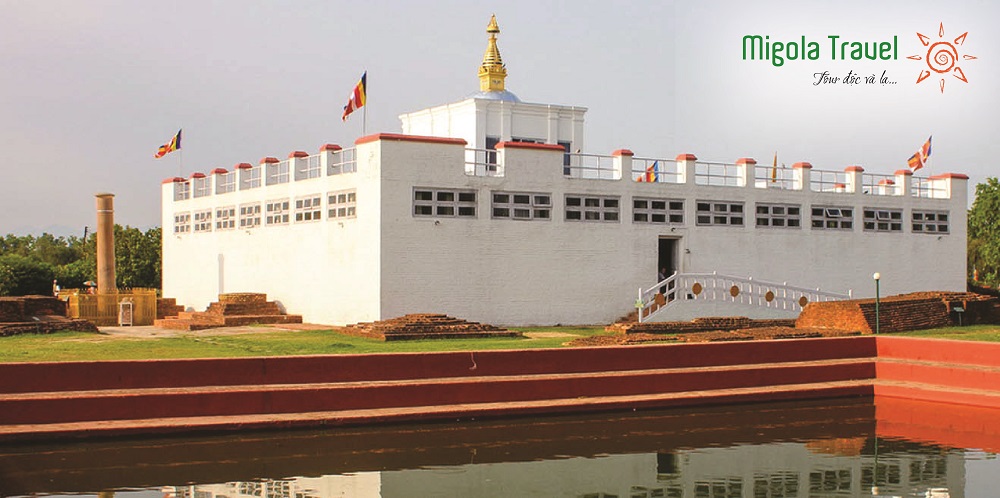
Lumbini Garden
The Father King named Prince Siddhartha, also known as (Siddhartha). Seven days after the prince’s borning, the Queen passed away and was born to Tavatimsa heaven. Therefore, her sister Maha Pajapati, made herself an aunt-mother to nourish the Prince.
According to legend, Prince was born with seven steps walking on the ground the right hand pointing to the sky, and the left hand pointing to the ground.
He walked seven steps symbolizing that there were seven Buddhas born on this earth. He is the seventh Buddha.
The seven ancient Buddhas are : 1. Vipasyin Buddha; 2. Sikhin Buddha; 3. Visvabhù Buddha; 4. Krakucchanda Buddha; 5. Kanakamuni Buddha; 6. Kasyapa Buddha; 7. Sakya Muni Buddha.
With his right finger pointing to the sky, left finger pointing to the earth, the Buddha said: "Up to all heavenly galaxy and down to all earth, only the real self is a solipsistic monopoly", which means "In heaven and on earth, only the true Ego is the most precious. The true Ego down here implies The Buddha-nature (enlightenment nature). "
The Prince grew up learning smoothly. He talented subjects in all aspects, especially the Prince loves so much all people and animals. As a child, Prince often prefers to sit quietly alone. When grown at age 16 in the year 608 BC, the prince married Princess Yasodhara. The couple had a son named Rahula.
One day the Prince asked his father to go to the city to roam through the four gates. When he arrived at the first gate, the Prince suddenly saw an old man with a cane going very miserable and the Prince asked the servant: "Why is this man so old?". The servant replied: "Dear Prince! Whoever was born and then they also have to suffer so old, no one escaped at all. " At the second gate, the Prince saw a sick person lying there. He asked the servant, "Why is this man so sick?". The servant replied: "Dear Prince! The disease does not spare anyone. Even the kids will also be sick. No one escapes the disease at all. " Next to the third gate, the prince witnessed a dead person. Prince asked the servant: "Why was this man dead?". The servant replied: "Dear Prince! Everyone has been born, they must be older and they must be sick. Illness is the cause of death. Death is the end of human life. You can not escape this death, too.” Finally, reaching the fourth gate, the Prince met a monk. Prince asks monks: "What do you practice meditation for?". The monk replied: "Dear Prince! meditating can help us escape from the suffering of birth, aging, illness, and death, and help us escape rebirth (samsara) ". After listening to the monk`s teaching about the path of liberation from impermanence, aging, sickness, the Prince enlightened the truth of temporary life. Because when the body dies, all career life is gone. Only good and evil karmas continued following all human beings. Thereby, it was found that the body is temporary, so life is temporary too. For that reason, the Prince decided to return to the royal court. He asked his father, King, to leave home to seek the zen master; but the father did not agree, because the king had only one son as crown prince to the throne.
Eventually, the prince escaped from the Kapilavastu kingdom to seek a zen master. At that time, he was 19 years old, on the 8th February of the lunar calendar in the year 605 BC. He learned and practiced Samatha meditation with two Zen masters Alara Kalama and Uddaka Ramaputta for five years. He attained all samadhi states in the heavenly realms of Rupaloka and the heavenly realms of Arupaloka . Then, he practiced vipassana meditation for 6 years with 5 dharma brothers as Kondanna, Bhaddiya, Vappa, Mahanama Kulika, and Assaji at the Uruvela village, Gaya city, Bihar state. He meditated all the time. Thus, the Prince forgot to eat, to sleep, and finally come to exhaustion. Fortunately, there was a girl named Sujata. She offered milk to the Crown Prince, while the Prince had been exhausting. Sujata was the first donor to the Buddha.
On the 8th December Lunar calendar in the year 594 BC, at the age of 30, the Prince meditated under the Bodhi tree and became Buddha with dharma-named Sakyamuni at Bodhgaya, Gaya city, Patna capital, Bihar state, India (the Magadha Kingdom before ).
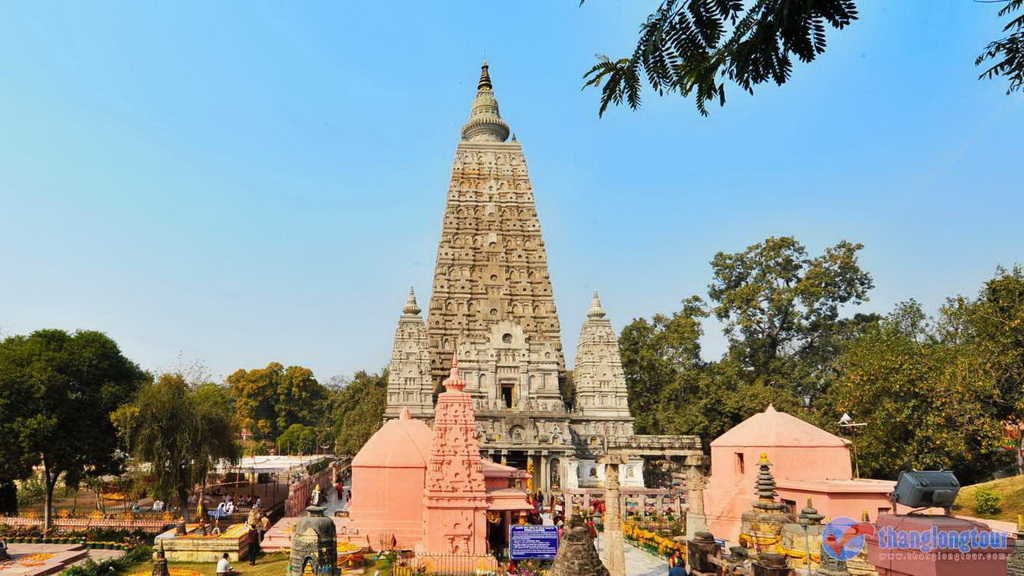
The enlightenment stupa 33 meters high in Bodhgaya
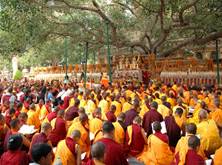
The Bodhi Tree in Bodhgaya
After his enlightenment, he went to Deer Park at Sarnath, Varanasi city and He taught the first lecture "Four Noble Truths" for the five dharma brothers Kondanna. After listening to the four Noble truths, They enlightened the truth of life and the truth of the mind. They attained Arahatship. The Four Noble Truths is the first dharma lecture.
Next, he went to Rajagriha, Magadha kingdom ( Rajgir city, Bihar state ) the reign of King Bimbisala and Queen Vihara. The Buddha gave the refuging in the triple Jems for King Bimbisala. This was the first king who took refuge in the Triple Gems by the Buddha. After that, the king donated land to Buddha to build up a Venuvana Vihara. This is the first Buddhist monastery.
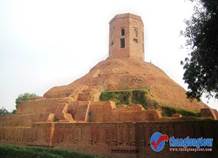
The Chaukhandi stupa where the Buddha met his five Dharma brothers at Sarnath
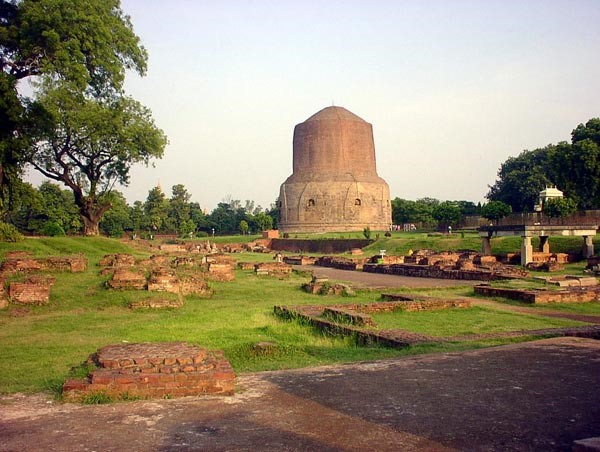
The Dhamekh stupa at Sarnath where Buddha
preached the first dharma lecture.
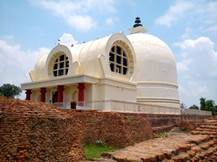
The Nirvana stupa at Kushinagar.
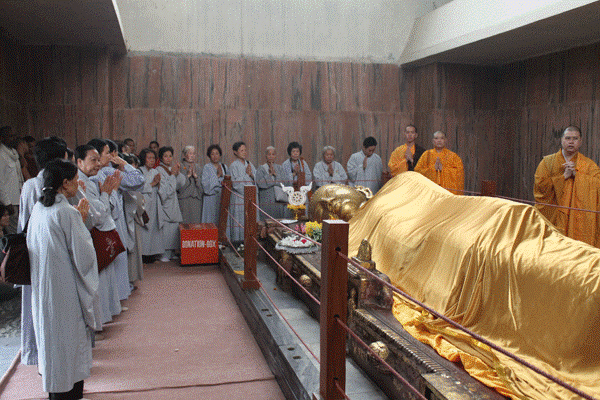
The Buddha status inside the stupa.
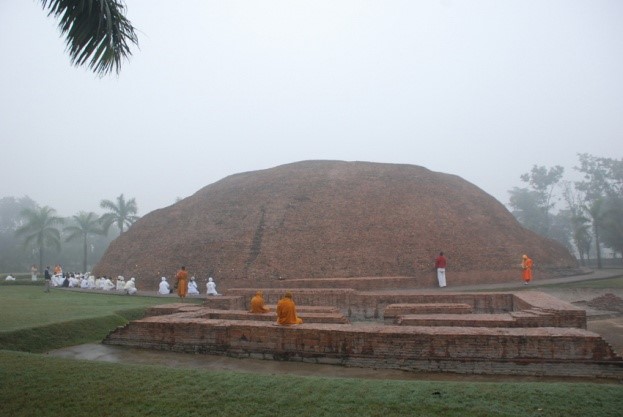
The Rambha stupa where the Buddha was burned in Kushinagar
Anathapindika was a rich man, very holy help to those suffering and lonely. He lived in Sravasti by King Pasenadi reigned at the time. He made offerings to the Buddha the Jetavana Vihara at Sravasti. This is the second Vihara that the Buddha established for the Sangha study.
Mrs. Maha Pajapati is a form of Buddha's aunt. She was ordained in Vaishali, along with 500 court concubines. She was the first Nun who the Buddha ordained. She established the Nun Sangha here.
After enlightenment, the Buddha preached the dharma to the kings and to every class in society for 49 years. He established the Triple Jems ( The Buddha, Dharma, and Sangha ) and completed the perfection of the Buddhist propaganda. He went to Kushinagar, capital Pava, Malla Parish. He entered the great samadhi and settled Nirvana under the Sala tree. He entered Nirvana at the age of 80, on the 15th February Lunar calendar in the year 544 BC. The Buddhist calendar is calculated from this year. Ex : the western calendar year 2016, 544 + 2016 = Buddhist calendar year 2060).
Maha Kassapa was the first disciple who is transmitted by the Buddha`s robe and bowl. He led the Sangha and continued the Buddhist circuit. After Buddha entered the Nirvana for 100 days, He chaired the organization in dynamic Sutras aggregation at Saptaparna, on the Vaibhara mountain, in Rajagriha, Magadha Kingdom. This is the first Sutras aggregation.
Ananda is the attendant of Buddha. He helped Venerable Maha Kassapa repeat Buddha`s teaching in the time of the first Buddhist Sutras aggregation. He is the second disciple to be transmitted the lord Buddha`s robe and Bowl from Venerable Kassapa in the Zen lineage Tradition. The zen patriarch continued transmitting the “Robe and bowl ceremony” together until Hui Neng. He was the 33rd patriarch in Zen Buddhism.
The Buddhist Monks later established the Nalanda Buddhist university at Nalanda, Rajagriha, Magadha Kingdom ( Rajgir city, Bihar state ). This is the first international Buddhist university in India.
500 years after, Indian Buddhism has transmitted across other countries thanks to the Ashoka king. This is the first King who propagated Buddhism abroad.
+ The ten chief disciples of the Sakyamuni Buddha:
1) Sariputra was the most wisdom.
2) Moggallana who had the most kabbalahs.
3) Maha Kassapa who was the leader of the Buddhist Sangha.
4) Subhuti explained the best of the emptiness topic.
5) Purna Mantaniputta preached the best about the Buddha Dharma.
6) Maha Kaccayana taught the best about Buddhist philosophy.
7) Anuruddha had the most deva-vision.
8) Upali taught the best about the Viyana and Silas.
9) Rahula had the most esoteric.
10) Ananda memorized the best of all Buddha`s teaching.
+ 33 Zen patriarchs:
After the Buddha entered Nirvana. He transmitted his robe and bowl to Maha Kassapa who is the presentative leadership of the Buddhist Sangha. The zen Patriarchs passed the lord Buddha’s robe and bowl together until Hui Neng who was the 33rd Patriarch. All the zen Patriarchs achieved the Arahathooh. They all entered Nirvana as Buddha. The Arahats had liberated samsara, so They could live or enter Nirvana depending on their wish.
Hui Neng entered Nirvana and remained an indestructible body until now at Nanhua Temple, Chaozhou, Guangdong Province, in China. The zen master Ham Son, also has his ongoing. At Mount Jiuhua mountain, there was Kim Kyo-gak, meditators. . . In Vietnam, there were Dao Tam and Dao Chan zen masters who left their flesh bodies at the Dau Pagoda, Gia Phuc village, Thuong Tin district, Ha Noi, Vietnam.
+ 28 Indian zen patriarchs:
- Maha Kassapa (Year 625 – 520 BC); 2- Ananda (Year 605 – 485 BC); 3 – Sanavasin (Year 550 – 470 BC); 4 – Upagupta ( 5 Year 00 – 430 BC); 5 – Dhitaka (Year 460 – 380 BC); 6 – Michaka (Year 440 – 360 BC); 7 – Vasumitra (Year 420 – 330 BC); 8 – Buddhanandi (Year 370 – 300 BC); 9 –Buddhamitra (Year 360 – 290 BC); 10 – Parsva (Year 360 – 270 BC); 11 - Puṇyayasa (Year 300 – 230 BC); 12 – Asvaghosa (Year 270 – 190 BC); 13 – Kapimala (Year 250 – 180 BC); 14) Nagarjuna (Year 240 – 130 BC); 15 – Kanadeva (Year 170 – 90 BC); 16 – Rahulata (Year 150 – 60 BC); 17 – Sanghanandi (Year 100 – 20 BC); 18 –Sanghayasas (Year -50 BC - +20 ); 19 – Kumarata (Year -10 BC - +60 ); 20 – Jayata (Year +30 – 100 ); 21 – Vasubandhu (Year 70 – 160 ); 22 – Madura (Year 120 – 190 ); 23 – Haklenayasas (Year 150 – 230 ); 24 – Simha Bhiksu (Year 200 – 280 ); 25 – Vasasuta (Year 240 – 325 ) 26 – Punyamitra (Year 300 – 388 ), 27 – Prajnatara (Year 360 – 460 ); 28 – Bodhidharma (Year 440 – 529 ).
+ 6 Chinese zen Patriaches:
The Bodhidharma Patriarch was the 28th in India. He went to China transmitting Buddha`s robe and bowl to Hue Kha Patriarch and the transmitting continued until Hui Neng- the 33rd Zen Buddhist patriarch. For China, Master Hui Neng is the 6th Patriarch, is the last in the “robe and bowl” lineage, because He Hui Neng terminated this lineage.
1. The organization's profile Bodhidharma Patriarch, 2. Hui Kha (Year 487 – 593 ); 3. The Seng Tsan (Year 517 – 606 ); 4. The Tao Sin (Year 580 – 651 ); 5. The Houng Jenn (Year 602 – 675 ); 6. The Hui Neng ( Year 638 – 713 ).
Zen Master Dang Dien - Sixteenth Patriarch Zen ongoing - Sixth Patriarch Hui Neng - Zen Master Ham Son, (Sixth Patriarch Hui Neng was born in 638, died in 713 at Nanhua Temple, Chaozhou, Guangdong Province, China) Zen Master Tao Chan - Zen Master Tam Dao At the Dau Pagoda, Gia Phuc village, Thuong Tin District, Ha Noi (Ha Tay province), Vietnam.
+ Tripitaka:
The Tripitaka is the lord Buddha `s teaching. It consist of 3 sets 1) Viyana Pitaka, 2) Sutra Pitaka, 3) Abhidhamma Pitaka.
+ Sutras Aggregation:
1. The first Sutras Recital happened in the year 544 BC, under King Ajatasattu at Saptaparna on the Vaibhara mountain in Rajagriha, Magadha Kingdom, presided by Maha Kassapa.
2. The second Sutras Aggregation happened in the year 444 BC, reigned
Kalasoka king, at Vajshali, Magadha Kingdom.
+ Buddhism split into two sets:
a - Theravadin - Theravada Buddhism led by Senior Yassa.
b – Mahayana: Northern Mass transport- Developed Buddhism - by group Sangha (Vajjiputta).
3. The third Sutras Aggregation happened in the year 244 BC, during the reign of King Asoka at Pataliputta, Magadha Kingdom ( At Patna, Bihar state now ), presided over by Moggaliputta Tissa.
4. The fourth Sutras Aggregation:
A - Southern: happened in the year 200 BC, during the reign of King Vatta Gamani Abhaya at Aluvihara in Sri Lanka, translated in Pali.
B - Northern: happened in the year 200 BC, during the reign of King Kaniska at Kudalavana, Kasmira Kingdom, led by Asvaghosa, organized by the 12th Zen Patriarch, translated in Sanscrit language translation.
5. The fifth Sutras Aggregation happened in the year 1871 during the reign of King Mindon at Mandalay, Burma (Myanmar).
6. The sixth Sutras Aggregation happened in 1954 on the occasion of Buddha's birthday celebration at Rangoon, Burma (Myanmar).
II. WHAT IS BUDDHISM?
The Shakyamuni Buddha was the founder of Buddhism.
1. Who is the Buddha?
1. The Buddha is a person who enlightened the truth of life and the truth of the mind.
a) The truth of life:
The Buddha taught that the sufferings of life have two kinds. The suffering of the body and the suffering of the mind.
• The suffering of the mind: 1) do not succeed one's desires; 2) to apart from relatives; 3) to be closed with enemies.
• The suffering of the body: Birth, getting old age, sickness, and death.
b) The truth of the true mind: The true mind is emptiness, silence in the mind. . . we can call Nirvana.
c) The Buddha taught about the cause and effect law, the impermanent law. etc. These are common principles of life and the universe.
2. The Buddha is a person who is liberated from reincarnation. Because he attained Nirvana (no rebirth).
3. The Buddha is a person who is pure, peaceful in the mind and he had many kabbalah because he kept precepts and did meditation.
4. The Buddha is a compassionate, lovely kind person. Because he vowed to rescue all sentient beings.
5. The Buddha is a wise person because he taught us how to remove greed, hatred, ignorance; how to end suffering.
2. Why do you trust the Buddha?
1) The Buddha was a real human being with real history.
2) He had real cultivation as means to become a Buddha.
*For example He practiced keeping precepts, meditation, and wisdom.
3) He was able to teach everyone to become a Saint, to become a Bodhisattva, and to become a Buddha by Tripitaka (Buddha`s teaching )
That is a reason why we trust the Buddha.
3. What is Buddhism?
Buddhism teaches us how to become Buddha. Because the Buddha said that all living beings have Buddha-nature. So, the Buddha said that I had become a Buddha already; everyone will become a Buddha in the future if everyone practices Buddha`s teaching.
4. What is the Buddha`s teaching?
The Buddha teaches us 3 points:
1. Do not do any evil.
2. Do all good things.
3. How to purify the mind and keep the mind silent.
These are Buddha`s teaching.
*Explanation:
1. Do not do any evil by keeping the 5 precepts.
For example:
1) No killing.
Those that commit the killing, the police will put them in prison. The prison is the hell being. So, Buddha gives precepts not only for the Buddhists but also for everyone
2) No stealing.
This precept is the same as above
3) no sexual misconduct.
You can get married to one only to have a happy family.
4) No telling lies.
No one trusts you if you lie to others. Unless you benefit other people, then you can lie. For example, the thief asks you: “where is your money? In this case, you can lie to him.
5) No drinking alcohol and drugs.
- If you are drunk, you can not control what you talk; what you do; what you think.
- Being drunk can reduce memory, damage the brain.
- Being drunk can not be aware and can not develop wisdom.
2. Do all good things to have good karma:
For example:
2.1. Eat vegetarian, befree all living beings.
- Eating vegetarian to reduce the killing.
- Befree all living being is to perform your love and compassion.
2.2. Practice giving and benefit other people.
Practice giving and benefit other people. This is to create merits and good karma.
3. How to purify the mind and keep the mind silent?
- If the mind is peaceful, you can live happily. It means that Buddha teaches you how to live with happiness.
- If the mind is peaceful, clean, and pure, it means that Buddha teaches you how to become an Arahant, how to become a Bodhisattva, and how to become a Buddha.
*For example: through the practice of meditation.
5. Do Buddhists worship idols?
Buddhists worship the statue of the Buddha on the altar. Most of the statues were made of bronze, wood, cement, stone, etc. the Buddhists sometimes pay respect to images of the Buddha, not in worship, nor to ask for favors. A statue of the Buddha with hands resting gently in its lap and a compassionate smile reminds us to strive to develop peace and love within ourselves. Bowing to the Buddha is an expression of gratitude for the teaching.
6. Why are there so many Buddhas and Bodhisattvas in Buddhism?
Why are there so many doctors? Because there are many students who study medical education. So many students become many doctors.
The Buddha taught everybody how to become an Arahant, how to become a Boddhisattva, and how to become a Buddha through meditation. Therefore, there are so many Buddhas and Bodhisattvas.
7. What do the Buddhists offer to the Lord Buddha?
The Buddhists used to offer flowers, fruits, waters, incense, candles to the Buddha for asking favors and for decoration of Buddha`s altar.
8. Do Buddhists give donations to the temple?
The Buddhists give donations such as money and materials to maintain the temple and to offer food to the monks´ life.
9. What is the meaning of prostrating to the Buddha?
Prostrate is to perform respect to the Buddha and an expression of gratitude for his teaching.
10. What is the meaning of repentance?
Repentance is to contrite the mistakes and to vow not to do it again. We repent our mistakes from this life and from the past lives. A man who repents mistakes is a good practitioner. Repentance is to purify the mind better.
We all have done some things wrongs, have said some things wrongs, have thought some things wrong. We can repent them and we wow not do them again. Even though we do repentance, our bad karma can not avoid the cause-and-effect law. We must accept it.
11. What is the meaning of generating the bodhicitta – of compassion?
To generate the Bodhicitta is to wow becoming a Buddha to rescue all sentient beings in the ten directions of the universe. In the past, the Buddhas and the Bodhisattvas all generated the Bodhicitta and great compassion to rescue all the sentient beings in the ten directions of the universe. So, Buddha's mind was so immense. We can say that Buddhism is great compassion.
Everyone has great compassion in their mind. But we do not know to develop and open it. It is not far away. It lies in our minds. It costs nothing to open our compassions. Why do we not open our minds? What are we waiting for? Great compassion is really our mind. Today, we should open our compassion by generating the bodhicitta (generating of compassion) above. If we achieve great compassion in the mind, we become a Buddha.
*How to vow:
- I am wow that I want to be a Buddha to rescue all sentient beings in the ten directions of the universe.
12. What is the meaning of eating vegetarian?
Eating vegetarianism is to avoid killing, to show respect to life, and to develop loving-kindness and compassion. Why?
Because human beings and animals both have life, love, feeling of suffering and happiness, etc.
Eating vegetarianism is avoid the meat of human beings and animals. We can eat tofu, cheeses, butter, milk, vegetables, etc.
13. What is the benefit of the practice of giving?
The practice of giving is able to create a lot of merits. How to practice giving? You can donate: 1) Money; 2) Materials; 3) Helping other people; 4) Giving the Buddha Dharma. All success in life depends on the merits. So the Buddha taught: “You benefit others, it means that you benefit yourselves”.
14. What is the benefit of befree animals?
We befree the animals to respect life, to perform our loving-kindness to the animals, and to develop our compassion.
15. What is the meaning of reading Sutra?
Buddha`s teaching consists of Sutra, Vinaya, and Abhidhamma. Reading Sutra is to study the meanings of Buddha`s teaching.
16. What is the meaning of chanting sutra?
Chanting is to read aloud in a ceremony. Chanting is to let the living and the dead peoples hear the Sutra. Such as they can be enlightened. The benefit of chanting is:
1) To understand the Sutra.
2) To pray and make peace for both the living and the dead being.
3) To concentrate the chanting is to have good mindfulness.
17. What is the meaning of chanting Mantra?
The mantras are the magical voice of the Buddha. Chanting Mantra is to have good mindfulness.
18. What is the meaning of reciting Buddha`s name?
Reciting Buddha`s name is to remind Buddha and we pray Buddha's blessing and rescue us from the suffering of the life cycle (reincarnation).
Reciting Buddha`s name is to have good mindfulness and a peaceful mind.
19. What is the benefit of precepts (Sila)?
The precepts help us to realize what is wrong; what is good. So, we keep the precepts to stop doing any evil. The precepts are the basic morality for all human beings.
20. What are the benefits of meditation?
- Reduce thinking
- Reduce worry
- Reduce tension
- Reduce stress
- Balance the body and the mind (good health )
- Improve memory
- Good concentration
- Good mindfulness
- Have a Peaceful mind and happiness
- Being enlightened
- Being clean, pure in the mind
- Develop compassion
- Develop wisdom
22. Do the monks make death prayers for everybody?
The Buddhist monks used to do death prayer for everybody. Because the Buddhas vowed to rescue all the living beings; They dwell in the great samadhi state and therefore, They had 6 Kabbalahs. They could see what we do; They could hear what we talk; They could know what we think; They could know our past and future life. They are able to guide all living beings to change their mind.
If somebody dies, the Buddhist monks make the funeral ceremony. After that, they make a death prayer every 7 days. It lasts for 49 days. In the case, they have free time, they can also do chanting every day for 49 days. At the same time, they make prayer for the death anniversary each year.
23. What is the meaning of dedication?
Dedication is to dedicate all our good doings, merits, and all our cultivations to all the sentient beings to become a Buddha.
Practicing dedication is to open our minds and develop our compassion.
24. What is the impermanent law?
The impermanent law is the changing of all the phenomena and all the things.
For example:
- The earth had always been moving.
- The weather changes from spring to summer, autumn, and winter. So the weather could be windy, raining, sunny, .ect.
- The environment always changes from time to time.
- The body gets older, gets sickness, and passes away.
- The mind is sometimes greedy, angry, loving, hating, happy, sad .ect.
So, all things had always been changing.
As we know all things, all phenomena had always been changing. We call it the impermanent law.
25. What is the Kabbalah?
The Kabbalah is the energy source of the mind or the power of the mind. That comes from practicing meditation.
26. What is karma?
Karma is from the Sanscrit language in India. Karma means to be the actions of the body, the mouth, and the mind. What you do, what you say, and what you think are all called karma.
Example:
- We do something bad. It means that we make bad karma.
- We do something good. It means that we make good karma.
So, Karma can be bad and good, it depends on what you do.
27. What is cause and effect law?
In society, we can see the big difference between the rich and the poor peoples; the long life and short life; the beautiful one and the ugly one; the good health one and the handicapped one; the intelligent one and the stupid one, .etc. It all depends on the cause-and-effect law. Who create it? Noone creates it. The cause and effect law is a common principle of life and the universe.
For example:
- If we create a bad cause; then we get a bad effect.
- If we create a good cause; then we get a good effect.
The Buddha said that nobody can escape from the cause-and-effect law if they do bad things. Therefore, the Buddha taught us to make good karma. Good karma is a good cause. Good cause can lead to good effect.
28. What is reincarnation (Life cycle – Samsara)?
The ending of life is death. After death, the human being cycles life from life. Because of a combination of ignorance, desires, and purposeful karma, or ethical and unethical actions.
The living being cycle through 4 ways: Birth from the womb, Birth from egg, Birth from moisture, Birth from transformation.
The human being cycle in six desired realms: 1) Gods, 2) Demi-Gods (half god), 3) Human beings, 4) Hell beings, 5) Hungry ghosts, 6) Animals.
• What does it mean with the desire realm?
A desire realm is a place with males and females. Because most of them require sexual desire.
• The six desire realms:
1) God: God is a being who lives in heaven. Human beings keep ten precepts and practice giving. After death, they will be born in heaven.
- Ten precepts are 1) no killing, 2) no stealing, 3) no sexual misconduct, 4) not to lie, 5) no slandering, 6) no harsh speech 7) no vain talk 8) no greedy and cheating, 9) no anger, 10) no ignorance.
- The desire heaven - The Celestial realms has six kinds such as 1) Catummaharajika heaven (The realm of the four kings), 2) Tavatimsa heaven (The realm of the thirty-three gods), 3) Yama heaven (The realm of the Yama gods), 4) Tusita heaven (The delightful realm), 5) Nimmanarati heaven (The realm of gods who rejoice in their own creation), 6) Paranimmitavasavatti heaven (The realm of the gods who lord over the creation of other).
2) Demigod ( half god ): The human being also practice giving, but they like fighting.
3) Human being: Human beings keep five precepts as 1) no killing, 2) no stealing, 3) no sexual misconduct, 4) not to lie, 5) no drinking alcohol. After death, they can be real human beings.
4) Hell being: Human beings are so angry, hateful, and make crucial karmas After death, they can be punished in the hell being.
5) Hungry ghost: The human beings are so greedy, slipping and making crucial karmas. After death, they can be hungry ghosts.
6) Animal: Human beings are so ignorant and make crucial karmas. After death, they can be animals.
29. How to become a Buddhist?
Everyone can become a Buddhist. A Buddhist still gets married and has a family. A Buddhist is a person who takes refuge in the triple gems (Take refuge in the Buddha, Dharma, and Sangha). At the same time, they vow to receive 5 precepts such as 1) no killing, 2) No stealing, 3) no sexual misconduct, 4) No telling lie, 5) no drinking alcohol, drugs.
The Buddhists have the responsibility to support the Temples and the sangha`s life.
30. What are the Triple Gems?
The Triple Gems consist of the Buddha, the Dharma, and the Sangha (In the Indian Sanscrit language).
• The Buddha is an enlightened one.
• The Dharma is Buddha`s teaching.
• The Sangha is a group of at least 4 monks who study and practice Buddha`s teaching.
31. Who is a monk?
A monk is a practitioner who studies morality and practice to purify himself. It means that he is not perfect yet.
32. How to become a Buddhist monk?
Everyone can become a Buddhist monk. The Buddhist monk does not get married, only study the Buddha`s teaching and practice meditation. The Buddhist monk has the responsibility to give teaching to the Buddhists.
33. How long can you be a Buddhist monk?
A Buddhist monk can study and practice meditation until you attain Nirvana.
A Buddhist monk can give up if he does not want to follow the monk`s life.
34. Why do the Buddhist monk wear robes and shave their head?
The Buddhist monk shaves the head and wears the robe. This formality is to differ from ordinary people.
34. Why do the Buddhist monks walk for alms?
The Buddhist monks walk for alms. Because they let everyone practice giving to create merits and to associate with the Sangha. At the same time, the Buddhist monks pray for the giver before eating.
35. How to be a good human being?
The Buddha taught that who can keep 5 precepts. Then they are good human beings. After death, they do not cycle in the hell being, hungry ghost and animal realm. Next life, they will be reborn good human beings again.
5 precepts consist of 1) no killing; 2) no stealing; 3) no sexual misconduct; 4) no telling lie; 5) no drinking alcohol.
36. How to be reborn as a god?
The Buddha taught that who can keep 10 precepts and practice giving. After death, they will be gods and will be reborn in the desired heaven.
10 precepts consist of:
• The body has 3 precepts: 1) no killing; 2) no stealing; 3) no sexual misconduct;
• The mouth has 4 precepts: 1) not to lie; 2) no slandering, 3) no harsh speech, 4) no vain talk.
• The mind has 3 precepts: 8) no greedy; 9) no angry; 10) no ignorant.
37. What is Nirvana?
Nirvana is from the Indian Sanscrit language. It means no reincarnation (no rebirth - samsara), the peaceful and silent state of the mind. This also is a result that the Arahat achieve it.
38. How to be an Arahat?
a) Who is an Arahat?
* The Arahat do not commit killing, stealing, not to fall in love with others, do not have sex with others, not to lie, do not drink alcohol, do not commit any government laws. etc.
* The Arahat does not have any disturbing, suffering.
* The Arahat is not greedy, angry, hateful, selfish, jealous, slipping, cheating .etc.
* The Arahat is a complete purely mind.
* The Arahat is a person who understands the truth of life and the truth of the true mind.
* The Arahat is no rebirth. Because he did meditation and attain Nirvana. He wants to live or to die, it is up to his decision.
b) How many stages to become the Arahat?
There are four stages: 1) Sotapanna Saint ( Stream enterer ); 2) Sakadagami Saint ( Once returner ); Anagami Saint (Nonreturner) and Arahat ( No rebirth ).
c) What is the cause leading to being an Arahat?
There are three points: 1) To keep precepts (Sila); 2) To practice meditation; 3) To practice wisdom.
1) To keep Precepts: Precepts help our body stopping to do any evil.
2) To practice meditation: Meditation is to purify the mind.
3) To practice wisdom: Wisdom is to remove the suffering of the greedy, anger, ignorance, jealousy, selfish .etc.
All Arahat has 6 kabbalah – Abhinna: 1) Eye divine ( Ability to see all form ); 2) Ear divine ( Ability to hear any sound, anywhere); 3) Mental telepathy ( Ability to thoughts of others ); 4) Psychic Travel ( Ability to be anywhere and to do anything at will; 5) Knowledge of past and future lives of self and others; 6) Ability to end contamination.
39. How to become a Bodhisattva?
a) How is the Bodhisattva:
The Bodhisattva and Arahat are the same enlightened ones. The Arahat do not want to cycle again. But the Bodhisattva vow to cycle again to rescue all living beings.
b) How many stages of the Bodhisattvas are there?
The Bodhisattvas vow to practice rescuing all living beings until they attain a Buddha. They have to undergo 52 stages to become a Buddha.
• Why are there so many levels of the Bodhisattvas?
Because They have big different concentration, kabbalah, and wisdom.
c) What is the cause leading to be a Bodhisattva?
*The Bodhisattva practice 3 points.
1) The Bodhisattva generates the bodhicitta vow.
* What is the bodhicitta vow?
The bodhicitta vow means to vow to become a Buddha to rescue all the living beings.
2) The Bodhisattvas practice 6 methods:
* To practice giving: To practice giving is to clear greed and to benefit other people.
* To keep the precepts: To keep the precepts is to stop doing any evil.
* To be tolerant: Being tolerant is to clear anger, hatred and to develop compassion.
* To be diligent: Being diligent refrain to be lazy and to effort the practice.
* To practice meditation: Practising meditation is to purify the mind.
* To practice wisdom: Practising wisdom is to remove the suffering of lust, anger ignorance .etc.
3) The Bodhisattva practice the bodhisattva way.
The Bodhisattva practice the Bodhisattva way. It means that They enter the life cycle (Samsara) to rescue all the living beings until they become a Buddha.
40. How to become a Buddha?
The Boddhisattva is enlightened to his fullness. He becomes a Buddha.
III. CONCLUSION:
All of us are looking for happiness from the outside such as love, materials, foods, positions, or other things .ect. When we get them and enjoy them; Then we feel comfortable and happy. That can be our happiness. Most of the happiness from the outside is temporary. Because they will be gone away one day.
Lord Buddha had guided us on how to find out happiness from inside, from our mind. Because the happiness from our mind can be longer. When we attain it, then we feel happy wherever we go. How to get it? We are able to get it by practicing Samatha meditation. The second point, Lord Buddha had guided us on how to qualify our personalities by keeping 5 Silas ( 5 precepts). The third point, Lord Buddha guided us the way to liberate Samsara (Rebirth). How to get it? We can learn and practice Vipassana meditation. Our practice can improve and change the mind. If we change our minds, then we can change our life.
Buddha taught that 1) Do not do evil, 2) Do good doing, 3) To purify your mind. When the mind is pure, there is no sorrow, no suffering anymore.
"If you live peacefully, you will die peacefully".
Namo Sakyamauni Buddha!
Chùa Phật Linh ngày 01/09/2015
Thích Hạnh Định
Chùa Phật Linh ngày 01/09/2015
Thích Hạnh Định
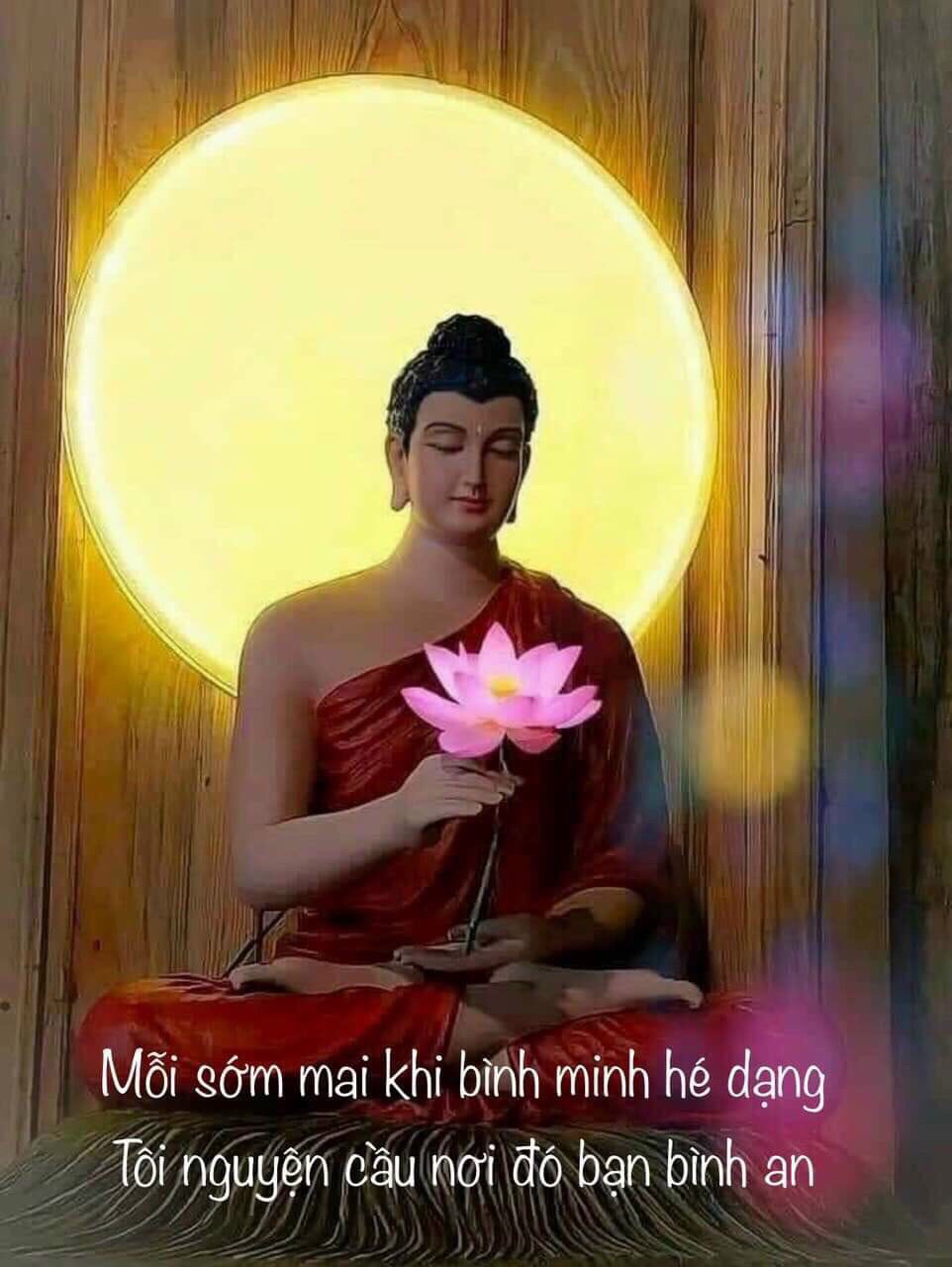
“Pray for this merit
Towards all
Disciples and sentient beings
All are fully Buddhahood.”
For free distribution only, as a gift of Dhamma
Towards all
Disciples and sentient beings
All are fully Buddhahood.”
For free distribution only, as a gift of Dhamma
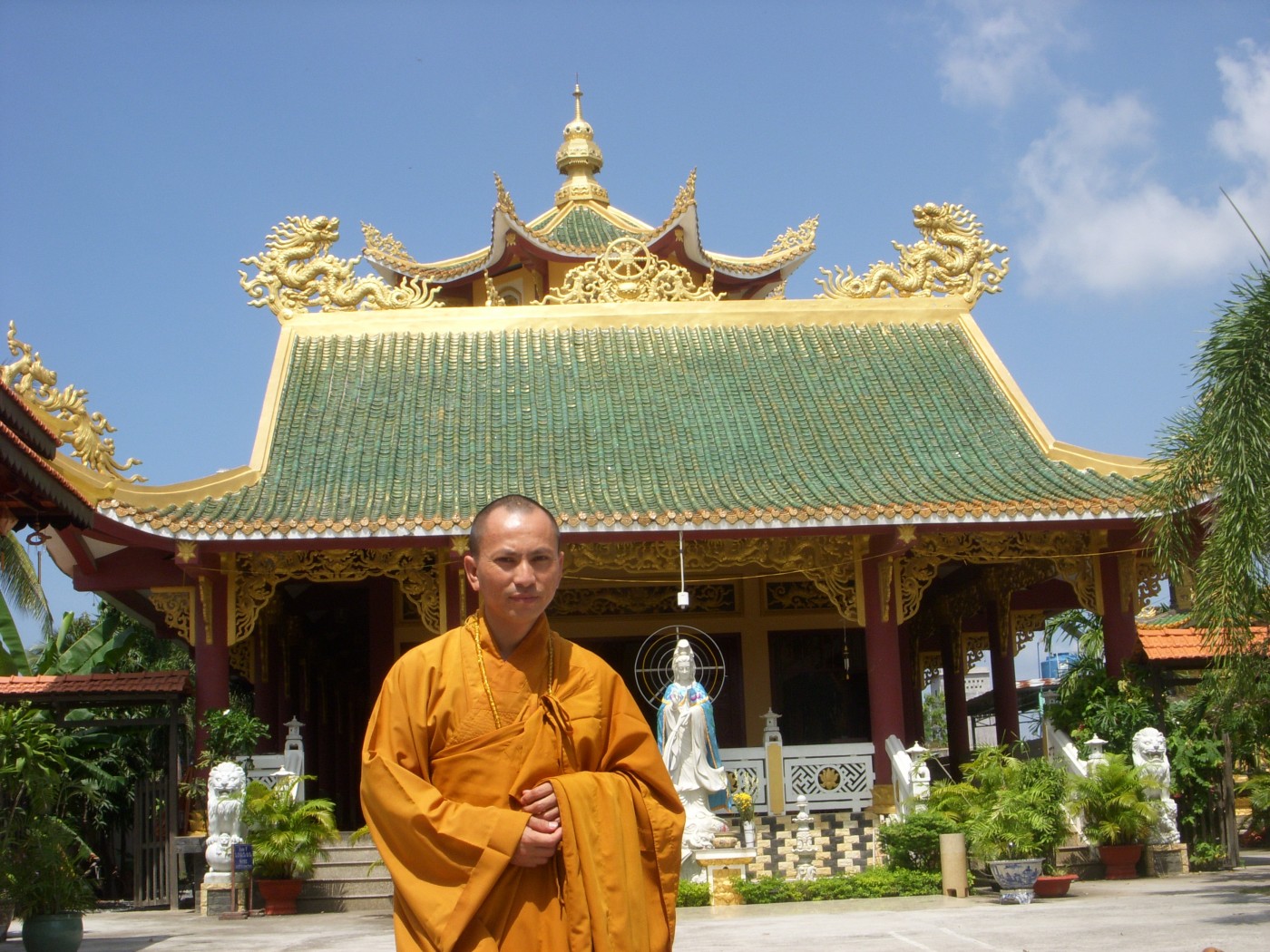
PHAT LINH TEMPLE
248A Tan Hoa Ward Phu My District,
Ba Ria – Vung Tau Province, Viet Nam
Tel: 0254 – 3891583
Website: WWW.chuaphatlinh.com
248A Tan Hoa Ward Phu My District,
Ba Ria – Vung Tau Province, Viet Nam
Tel: 0254 – 3891583
Website: WWW.chuaphatlinh.com